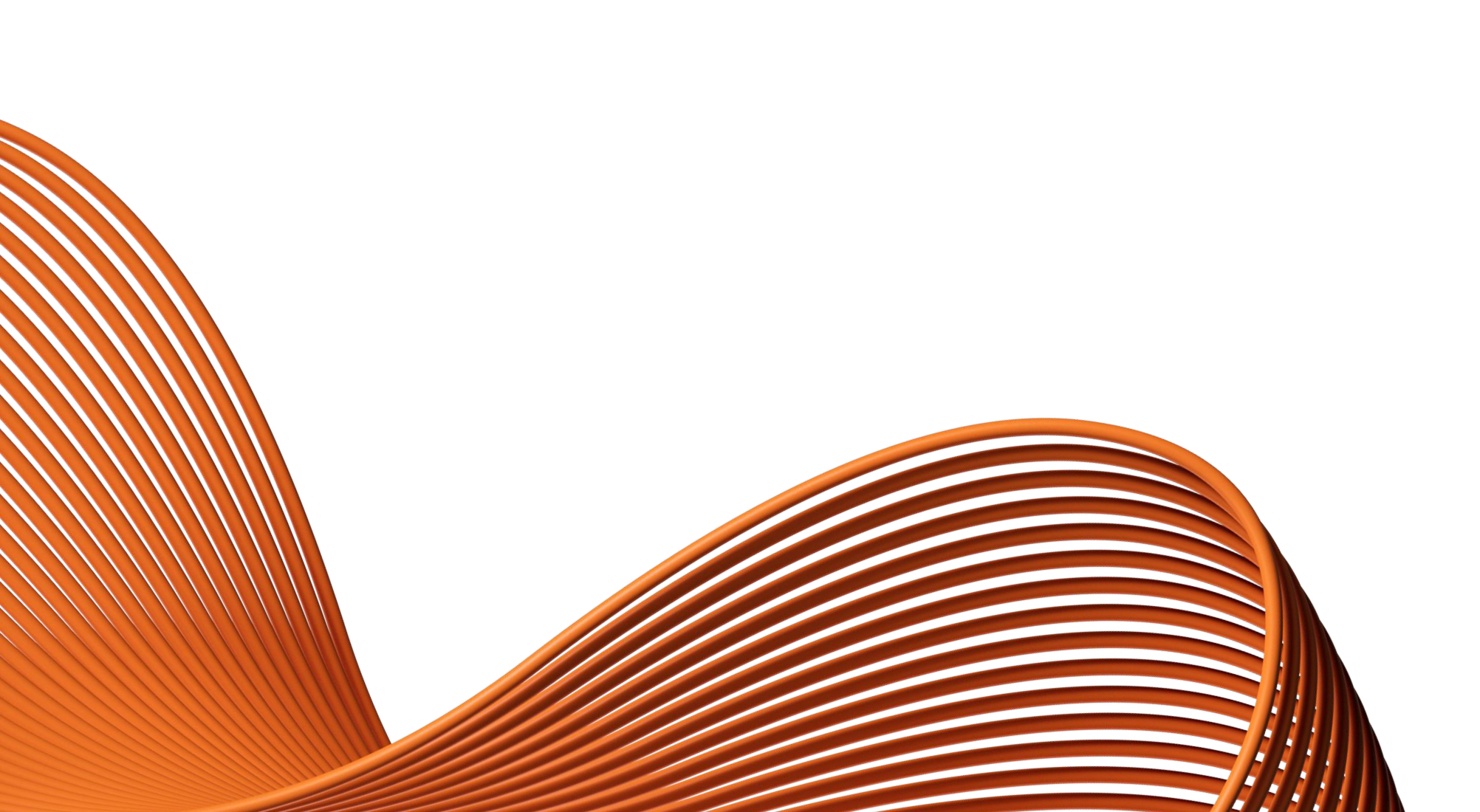- Our Products
- Upper Extremity
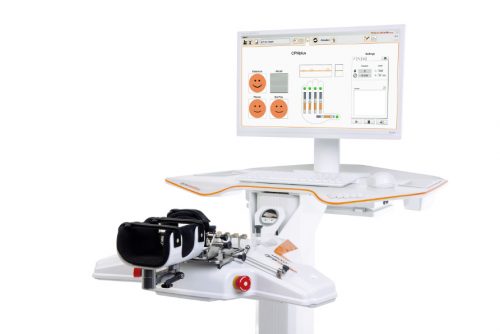 Amadeo Finger-Hand-Rehabilitation
Amadeo Finger-Hand-Rehabilitation
Amadeo is giving hands back their grip and fingers their finesse. Patients who are barely able or unable to grasp can perform hundreds of robot-assisted grasping movements. It won’t train a new Mozart. But it will help patients return to the piano, handwriting Christmas cards, and grabbing life firmly by the horns.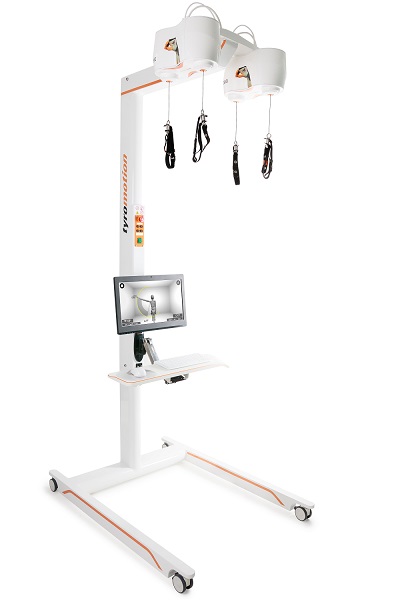 DiegoShoulder-Arm-Rehabiliation
DiegoShoulder-Arm-Rehabiliation
Diego is designed to strengthen what’s important. Whether proximal or distal training, Diego purposefully supports the rehabilitation of natural motion, allows the handling of everyday objects to be relearned, and is usable by adults and children alike.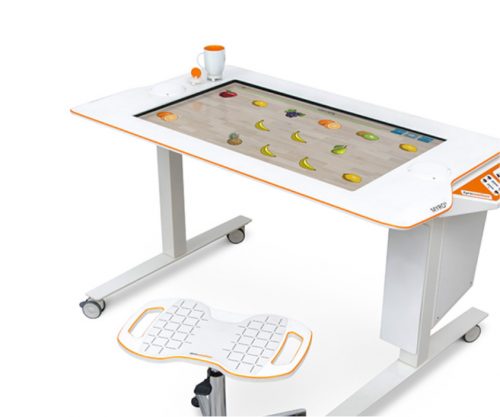 Myro Interactive and task-specific therapy
Myro Interactive and task-specific therapy
Myro is made for making humans get better! The sensor-based surface enables task-oriented rehabilitation with real objects, trains the patient’s cognitive abilities, and improves motor abilities of the upper extremity.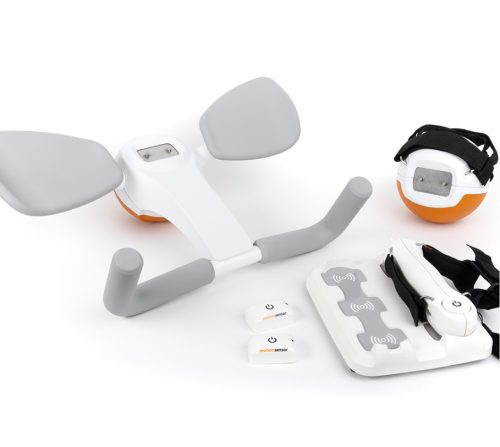 Pablo Upper Extremity Rehabilitation
Pablo Upper Extremity Rehabilitation
As a multifunctional rehabilitation device with comprehensive accessories, Pablo enhances classical therapy exercises with biofeedback, objective assessments, and gamification. It won´t train the next Picasso. But it will help patients to take back control of their lives.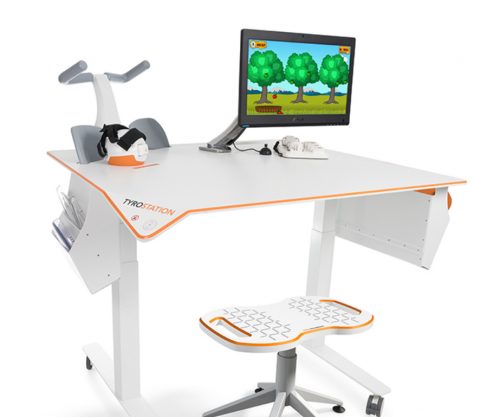 Tyrostation The perfect therapy setting
Tyrostation The perfect therapy setting
The Tyrostation is home to all components of Pablo and Tymo and provides ergonomic adaptability for patients. Sometimes, it´s about the little things in life – or therapy.
- Lower Extremity
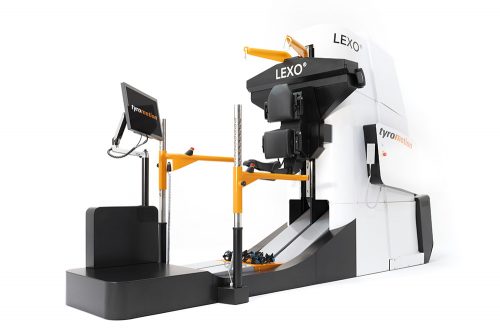 LexoGait and Locomotion
LexoGait and Locomotion
Lexo is a revolutionary gait trainer and impresses with fast setup, high patient activity and optimal trunk support. It encourages active participation and enables therapists to focus fully on their patients.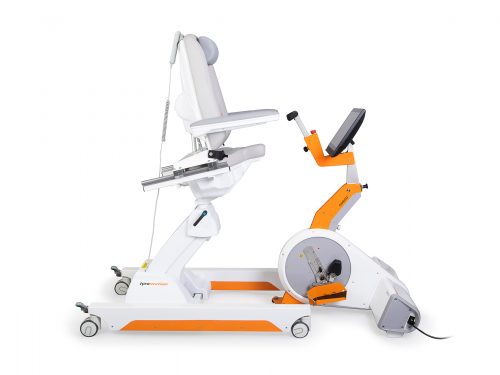 Omego Plus Gait training for the goals across all phases
Omego Plus Gait training for the goals across all phases
More than just a therapy bike! Omego Plus combines uni- and bilateral leg training, leg press, stepper, cycling & foot lift training in one device. Stride stronger with Omego Plus!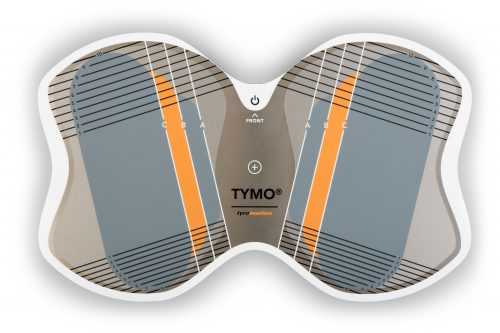 Tymo Balance training and postural control
Tymo Balance training and postural control
Small but powerful! Tymo is a versatile measurement and therapy system for the whole body. In addition to the standing position, Tymo offers a wide range of options for maximum variety during therapy.
- MTT-Line
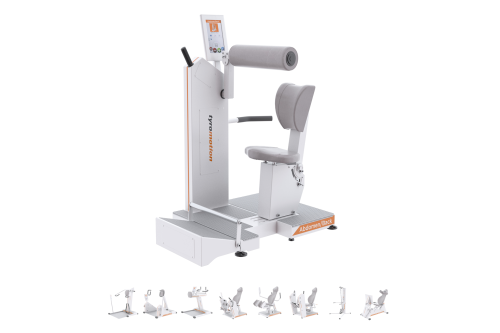 MTT-LineMedical training therapy
MTT-LineMedical training therapy
Get back in the game with the MTT-Line! The Medical Training Therapy devices are specifically designed to strengthen the six major muscle groups of the human body. Barrier free and maximum adjustability make the devices accessible for all types of patients.
- Software
 Maya Therapy Platform
Maya Therapy Platform
Maya reduces paperwork, standardizes documentation, and automates reporting, making administration effortless and efficient. Designed for therapists to work wonders!
- Upper Extremity
Rehabilitation
The importance of cardiovascular exercise after a stroke
15. November 2022 ● 7 min. Reading time
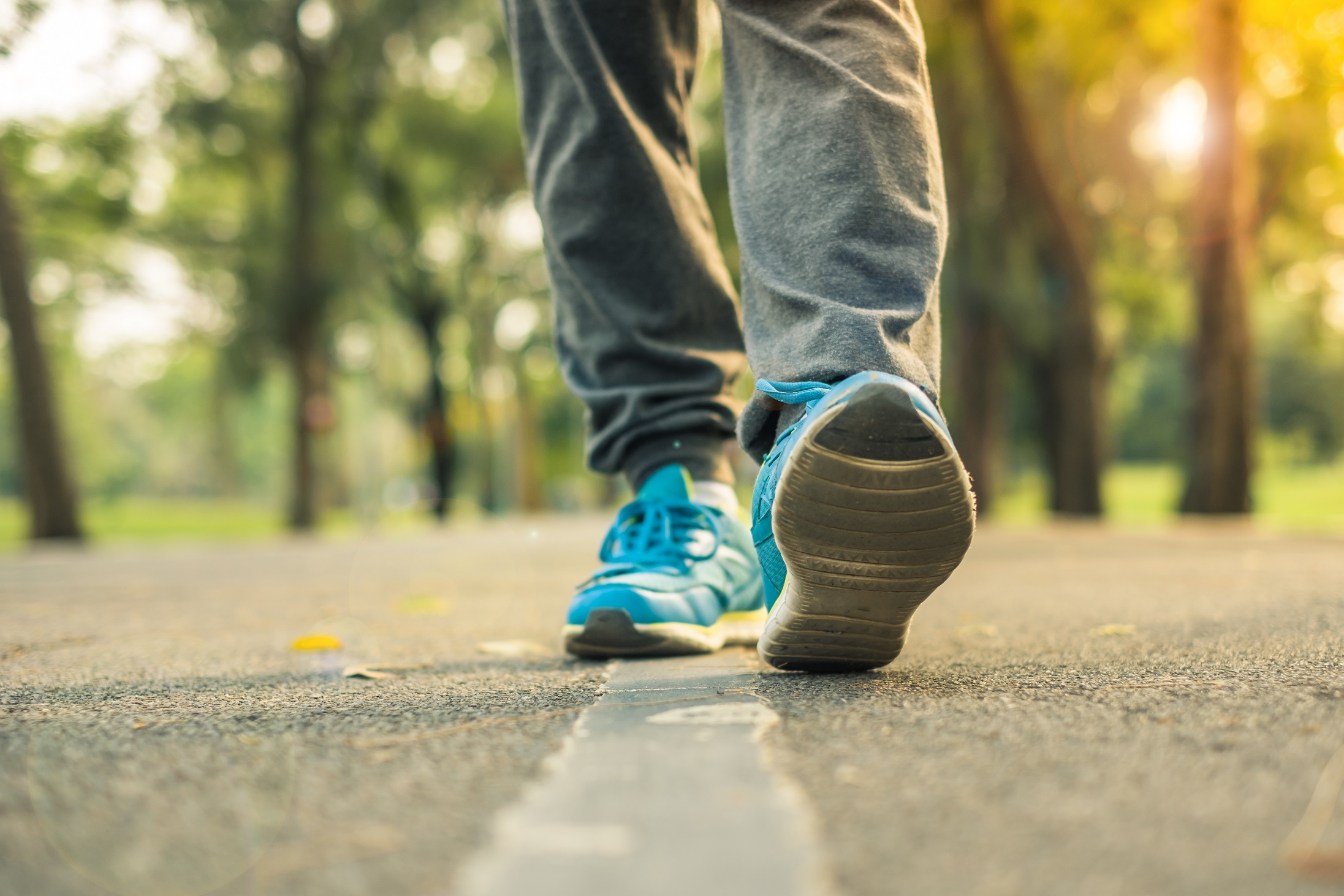
Returning to previous activity levels can be challenging after a stroke. But working toward it is important to recovery, especially because good cardiovascular health is the best way to protect yourself from another stroke. Most rehabilitation programs focus on helping survivors regain lost function and mobility, such as the ability to walk and climb stairs, which allows for increased cardiovascular activity.
What you may feel after having a stroke
The muscles on the affected side of your body change after a stroke. You may find it difficult to do simple things, like raise one arm over your head. You may feel weak, sluggish or clumsy. Even something simple like getting out of bed in the morning may be difficult.
On the other hand, you may feel like you can jump right back into your old exercise routine, particularly if you were an active person beforehand. It’s important to take it easy. A stroke can affect your body in many ways; some that may not be immediately apparent. For example, walking short distances may now leave you out of breath when you used to run several miles a day.
Rehabilitation for stroke survivors
Many stroke survivors go straight from the hospital to a rehabilitation program, with the goal of re-establishing as much independence as possible.
Therapists work to improve the patients’ lower extremity strength and coordination. Gait rehabilitation is an essential component of recovery because it helps with a stroke survivor’s walking ability and speed. It also helps with balance and to reduce the risk of falls.
Using advanced technology, physical therapists can motivate stroke survivors to perform repetitive, rehabilitative movements by introducing fun, engaging therapies. Research has found that when someone enjoys an activity, he can temporarily forget about the long road to recovery.
But one area that’s missing from most rehabilitation plans for stroke survivors is cardiovascular exercise. A study found that the rehabilitation programs for heart attack survivors typically include aerobic activities, while those for stroke survivors don’t. The study suggested that people rehabilitating from a stroke can enhance their health and mobility by taking part in aerobic exercises.
The benefits of cardiovascular exercise after a stroke
Exercise can improve mental health and cognition. And movement floods the brain with endorphins, leading to a better mood and increased motivation.
Because stroke survivors have about half the cardiovascular fitness of people who haven’t had a stroke, improving heart and lung health should be a critical part of the rehabilitation process.
Improving the aerobic fitness of survivors can reduce the risk of death after a stroke. Exercise can also reduce the risk of another stroke because it lowers your blood pressure, resting heart rate, and triglyceride levels and increases your body’s ability to break down clots. Plus, having a stronger heart and lungs makes it easier to participate in day-to-day activities.
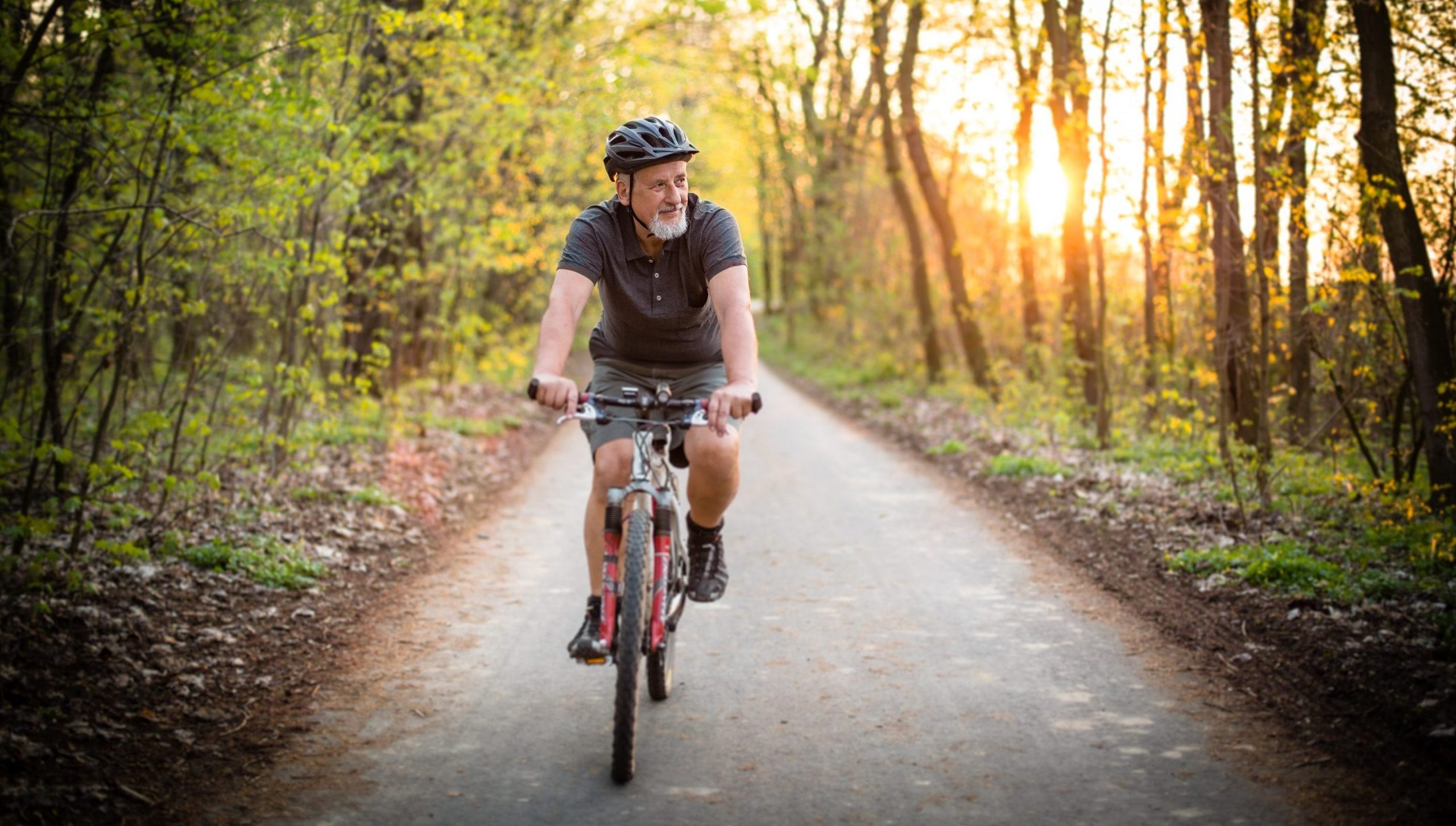
High-intensity interval training (HIIT) can also help improve the gait in people able to walk after a stroke, but who have trouble with movement and coordination. Research has found, HIIT helps with cardiovascular function and motor skills after stroke and enhances neuroplasticity. When joining HIIT training, it is important to listen to your own body and not to overdo it!
In addition to aerobic exercise, stroke survivors should consider incorporating strength, stretching, and balance training into their routines. These activities can help increase flexibility, coordination, and muscle tone. Also, yoga might be a good option for stroke survivors.
Incorporating cardiovascular exercise into your routine
Cardiorespiratory training should be incorporated in the daily routine of stroke survivors. A walking program is a great way to start. You can work your way up to two or three walks a week, for 30 minutes or longer at a time. Find a friend to join you — exercise buddies make great accountability partners.
If walking without supervision is not advised, a personal trainer may be an option. Other great options are swimming or pool exercises that can be easier on your joints and muscles.
Cardiovascular training with robotic rehabilitation devices
Cyclic sports that activate several large muscle groups are ideal for cardiovascular training. Good examples are cycling, walking, hiking, handcycling or swimming.
For neurologic patients, many forms of exercise are limited or not possible at all, especially in the early rehabilitation phase. Robotic devices can help. Therapy devices support the patient to perform movements such as cycling. In the early rehabilitation phase, it is the goal to activate the cardiovascular system and gradually reintroduce the joints and muscles to various forms of movement. The exercise has not to be perfect yet!
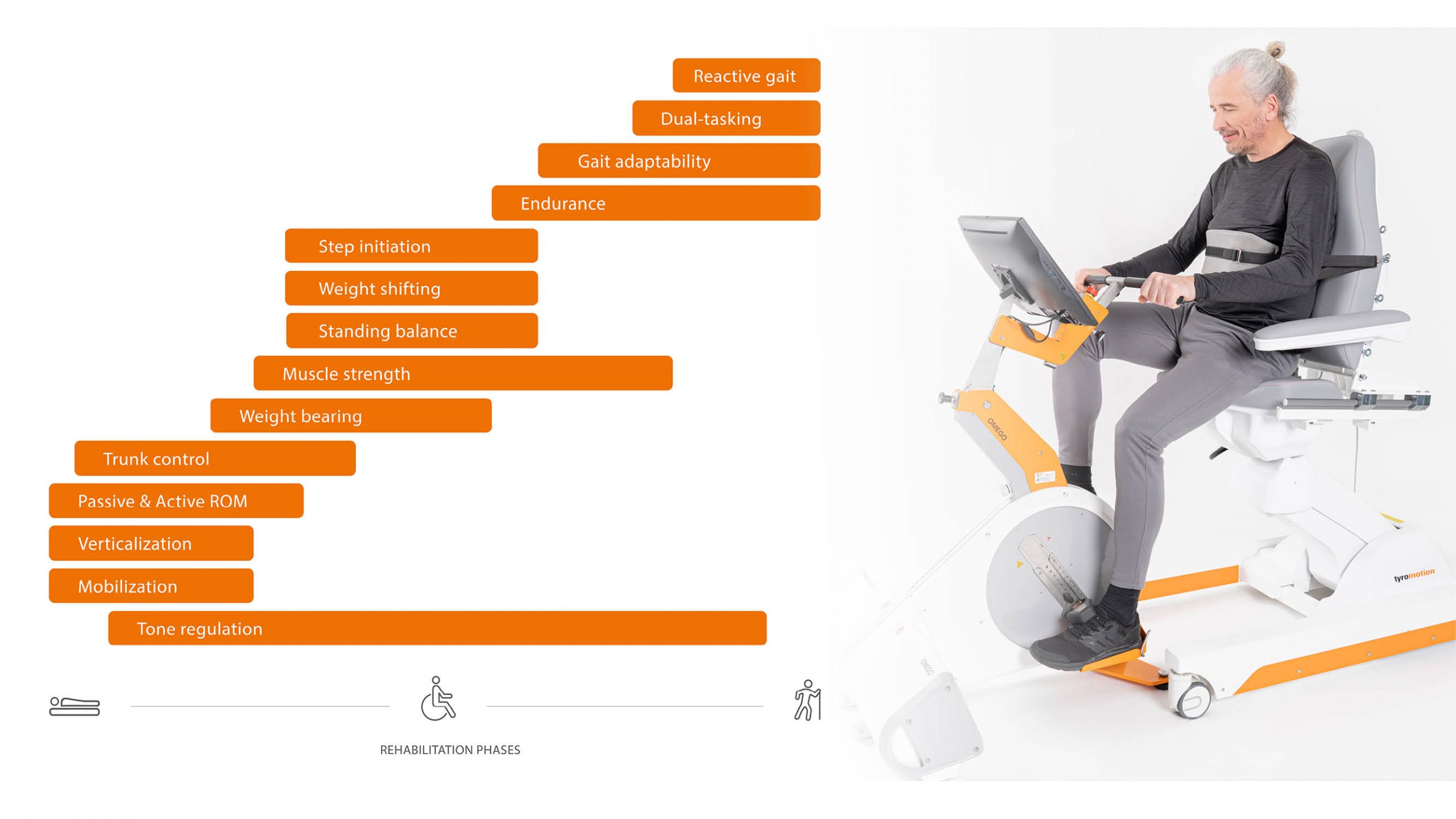
OMEGO Plus is a robotic therapy device designed for lower extremity rehabilitation. One of the highlights of OMEGO Plus is the individually adjustable therapy chair. In the early rehabilitation phase, patients can train with OMEGO Plus in a lying, later sitting, and towards the end of rehabilitation, almost in a standing position. Step by step patients work towards an upright gait. The verticalization feature of OMEGO Plus fosters a large patient range in both inpatient and outpatient settings.
In addition to the classic cycling function, OMEGO Plus also offers the functions leg press, stepper and ankle training. Patients use OMEGO Plus to train the four parameters needed for a safe, upright gait: Walking ability, walking distance, walking speed and balance.
You might also be interested in
4. April 2023
Health
Rehabilitation
Stroke nutrition guidelines for optimal health
Nutrition as the key part in health and well-being of stroke survivors A healthy, balanced …
21. March 2023
Rehabilitation
Kinesio taping in neurology as a useful therapy supplement
The Kinesio tape and its usefulness in neurological therapy What was originally known only from …
7. March 2023
Rehabilitation
Exercises against freezing of gait in Parkinson’s disease
When the legs freeze – how does the symptom “Freezing of Gait” manifest itself? Parkinson’s …



 Contact
Contact 

 Contact
Contact 